I am planning the ball mount installation on my truck. Big question: have it on the right side or the left side of the truck? If it's on the left, it's very visible to anyone driving down the street. If it's on the right, an antenna can get snagged on bushes or trees if I park too close to the curb. Still, I think I'm going to do it on the right, because the antenna won't be on it most of the time and it will be a little less visible when I have to park on the street.
While searching for related information, I found K2BJ's HF Mobile Page, a good collection of info (a bit flashy, takes a while to load even on a fast connection).
The ham club at University of Hawaii reports that they had some fun and adventure when they tried to set up an outdoor station, with their wire antenna going into some convenient palm trees and their ground connector clipped to the top of a fire hydrant. Naturally somebody thought they were trying to destroy the trees and blow up the fire hydrant, and called campus security on them! Their page contains good study material on things you can do in such a setup.
I found a good web page about rovering by KB0CY. He discusses a lot of the things I needed to find out about.
Then I came across the CODE Rover Pages, which have several of their trip reports, complete with very useful photos. I could see how they had their vehicle set up on different trips. On one trip they operated from the tailgate; on another trip it was done from the back seat while in motion.
Until I ran across those, I hadn't even considered that I might want to go out for just the VHF operating. I was so centered on the problems of setting up a portable HF station that VHF didn't even come to mind. But antennas are smaller and easier to work with, and there are several opportunities a year to do it (contests, etc).
This has changed my thinking somewhat, so now I will consider some VHF-only trips in addition to the originally planned HF outings.
March 2002:
Not much progress made this month, though I read more about antennas, especially portable ones.
I found a page by another ham who's done the sort of thing I'm planning. N6MM has made various trips to mountaintops and other locations in this area for HF and VHF outings, using his pickup truck to haul and operate from. He's got quite a few pictures and good descriptions of his setups and his results.
The planning for my own vehicle is going on the back burner because I am planning a multi-state road trip with my brother John, N7JY, and we're tentatively planning to take my 706 along. So the focus now is on that project, but he's the one concerned with the antenna situation there.
April 2002:
The portable project has taken a bit of a detour but not a wasted one.
N7JY and I will be going on a long road trip. The N7JY Grizzly Bear (a big Chevy Suburban diesel)
will tow his 30 foot Airstream trailer. We plan to operate my 706 from the trailer while camping,
using an antenna mount that he and some friends designed.
So, he's taking care of the mount and the power, and I am supplying the radio and the antennas
(some Hamsticks, which have been well recommended).
This will give me a good opportunity to see how well my own portable trips might work out,
and of course it's all done from the comfort of the trailer.
May 2002:
N7JY and I did take that road trip from California to Illinois, May 4th-19th 2002.
We operated nearly every night on the
3905 Century Club
40m net from a total of 11 states, including 3 state capitals,
and each of us made over 200 contacts.
That may not sound like a lot, but it's quite a haul for working on this net;
at home I usually only get 4-5 contacts a night in a 90 minute net operation.
This time we often got a dozen or more a night.
Yes, I admit we could certainly have worked many more stations if we'd just gone around different bands,
but I only brought the 40m Hamstick. It was the only band I'd planned on using, and
we knew in advance that we would not have time to work anyone except at night.
The Icom 706 was run to the Hamstick in a custom antenna mount that N7JY and some friends built. The base of the antenna was about 5 feet up, and the top of the whip was 12 feet above the ground. We operated entirely off the solar-powered trailer battery system with no use of outside AC power at any time. Due to the limits of the battery system, we found that we could run no more than 50 watts from the radio and one set of interior lights at once; any more caused an excessive voltage drop that caused the radio to shut itself off. Still, 50 watts was plenty with that setup, and most nights we could easily work nearly anyone we could hear, and vice versa.
Working from a solid operating table inside was a big plus. One night during our trip, N7JY had to move the whole trailer to the opposite side of a large truck parking lot, while I sat inside at the radio with the net in progress! Fortunately I didn't have to work anyone during those couple of minutes, but it should prove that this was a true mobile setup!
I learned much from that 2 week trip about how to get the radio set up to go in a short time, and what items to have on hand. A notebook for logkeeping, notepads for scribbling other notes while working a station, tools to secure and take down the antenna, etc. (We'd planned on keeping the Hamstick on the Grizzly Bear at all times, but decided that it was better not to have that big tall thing advertising a ham-mobile all the time.)
June 2002:
The month was mostly spent recovering from the vacation and getting all of the QSL cards mailed.
I would have liked to have gone to Field Day, but I had other pressing concerns that weekend.
June also had a VHF contest, so I got on 6m SSB a little from home and made a few local contacts,
but 6m didn't want to open while I was on the air. Oh well.
July 2002:
I found yet another article by someone else discussing
this same topic.
August-October 2002:
This whole project was on the sidelines while I did other things,
chiefly with APRS and other things.
N7JY took the Hamstick antenna with him on a trip to Nevada in August
and used it with his own HF setup in the trailer.
I still want to get out again with my 706.
I am going to build a small 2m beam antenna,
perhaps a Quagi or a Half Square, and try to work some VHF in the field.
November 2002:
I built the simple Half Square antenna, pretty much as per the design of
W4RNL.
It did not have the kind of nulls I had expected it to have, because local 2m repeaters
are full scale on it no matter which way I turn it!
I have to experiment with it some more, especially with more distant machines, to see
how much difference there is with the one I built.
Year End 2002 Report:
The project this year was not a failure. I did get out there and I did work portable,
although not quite the way I had originally envisioned.
The mobile work from the N7JY Airstream trailer was done entirely on battery power,
which in turn was solar powered.
(The trailer batteries are not connected to any kind of AC charger.)
I learned a lot of things in the process.
Meanwhile there are always more opportunities ahead for doing this, such as upcoming contests, and vacation trips. We'll see what lies ahead.
More Notes:
I tried out a tall mast which puts the 2m half square antenna some 15 feet above the ground.
It fits nicely inside the truck's window frame, and with the aid of a stretch cord hooked to the
headrest, seems to be secure enough. It's as flimsy as can be though,
and I wouldn't try to drive with that thing on there, it would break off
like a toothpick, hit somebody else's car and get scratched.
(The other car wouldn't be in too good a shape either, and if the driver caught me then
I would soon be bent out of shape too.)
But for a temporary antenna to put up for an hour or two, maybe it'll do pretty well.
I tested it on some more distant 2m machines, and compared signal strength with the roof dual band whip. The half square beat the pants off of it, no small extent due to the increased height, I'm sure. You can hear the nulls on some machines better than you can see it on the meter. The nulls are in line with the two elements and of course the best reception is broadside, or equidistant from both elements.
I tried it out on 70 cm just to see what it does. The pattern seems to be 90° off: best reception is endfire and the nulls are broadside. I expected it to be different because it was not built for that band, but it is interesting to note that it can be used for some DF purposes there. I didn't transmit on the 440 side, because discretion is the better part of cowardice and I don't want to ruin my radio if it's a real bad mismatch. Some checking with an antenna analyser is in order - if I had one.
The thing is top heavy and unwieldy. The next one I make will use different materials, such as sturdy PVC pipes, the way W4RNL designed it.
I plan to take it out to some remote places and try it out, perhaps during a VHF contest. Wait till I try it on a mountaintop with 50 watts on 2m. For SSB work, a horizontally polarized antenna would be preferable though. We'll see.
November 2003:
Well, I finally did it. Bought an Icom AH-4 automatic remote tuner in October.
And this past weekend, N7JY helped me install it into the back of my truck.
And I tried it out and it works! A 102 inch stainless steel whip antenna
(from the local Radio Shack) tunes up on 40m through 6m with a 1:1 match in under 3 seconds.
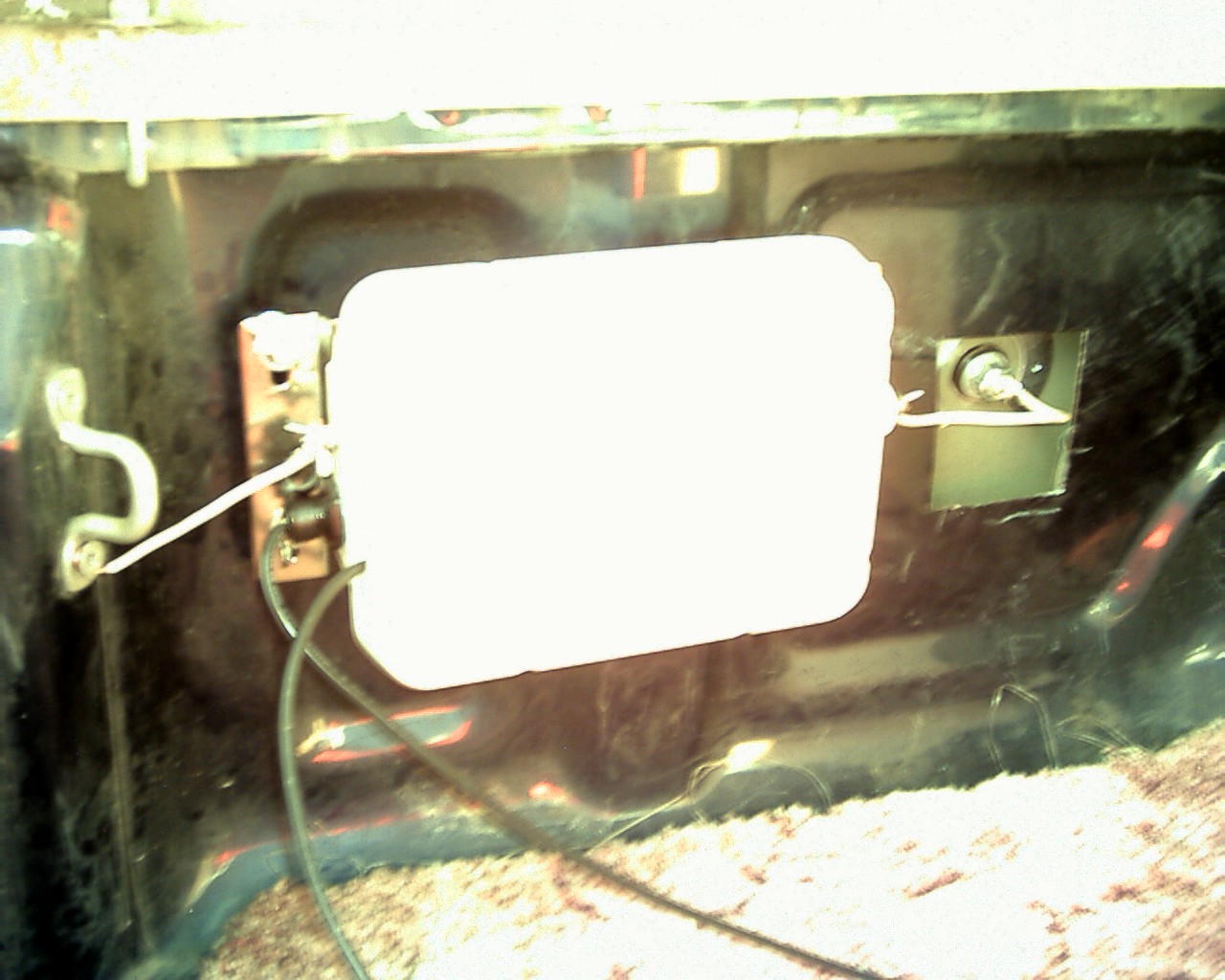
This is the overall view of the AH-4 tuner installation. Sorry for the washed out pics and the dust!
The tuner was mounted to the inside truck bed wall using standoff bolts and wingnuts.
This way I can easily remove it for some portable work away from the vehicle if desired.
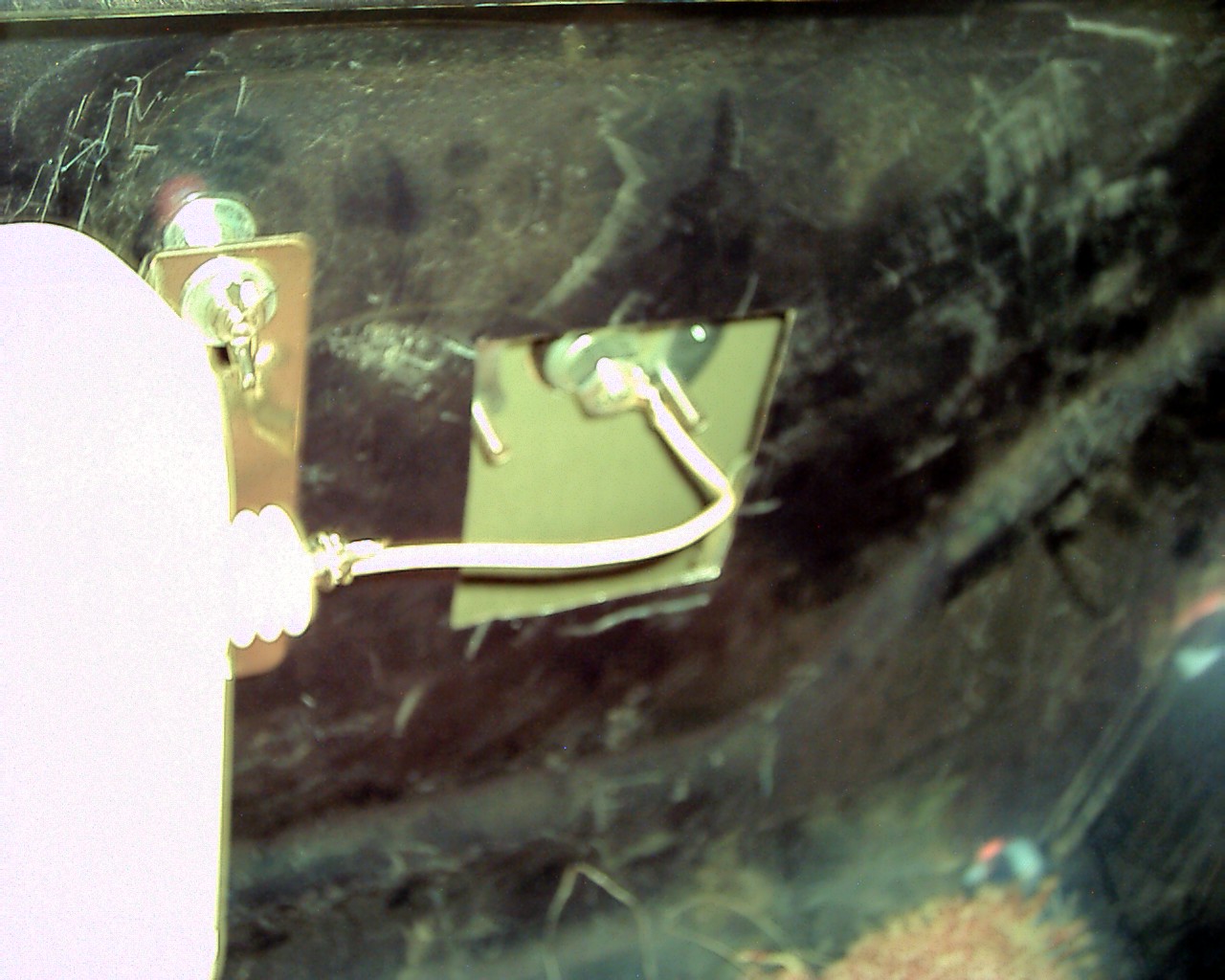
This is a thick insulated single wire from the antenna connection, through the wall of the truck bed,
to the Hustler heavy duty ball mount. It avoids metal as much as possible while maintaining a relatively
short path.
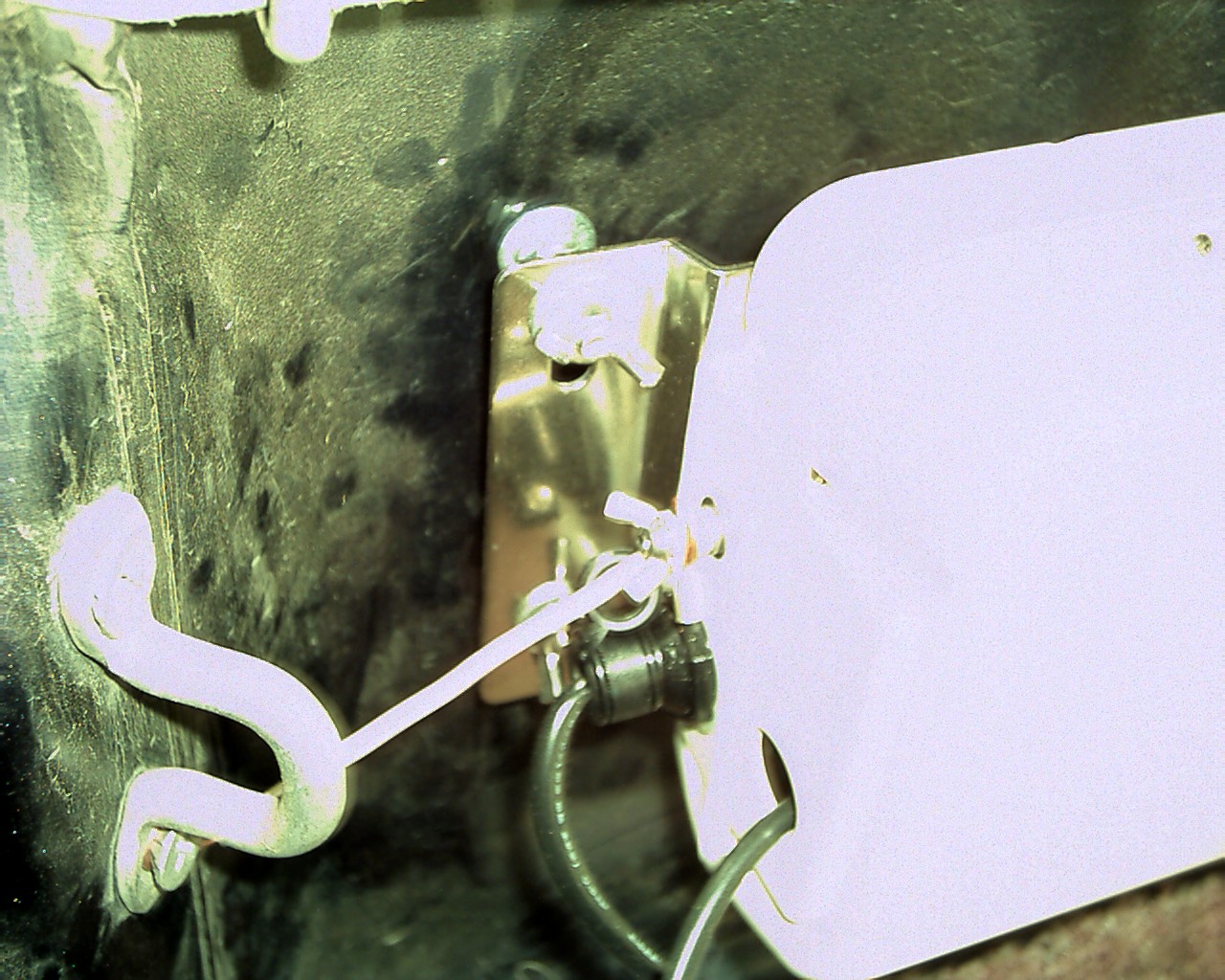
A short but thick wire from the ground connection goes right to a good spot for a ground.
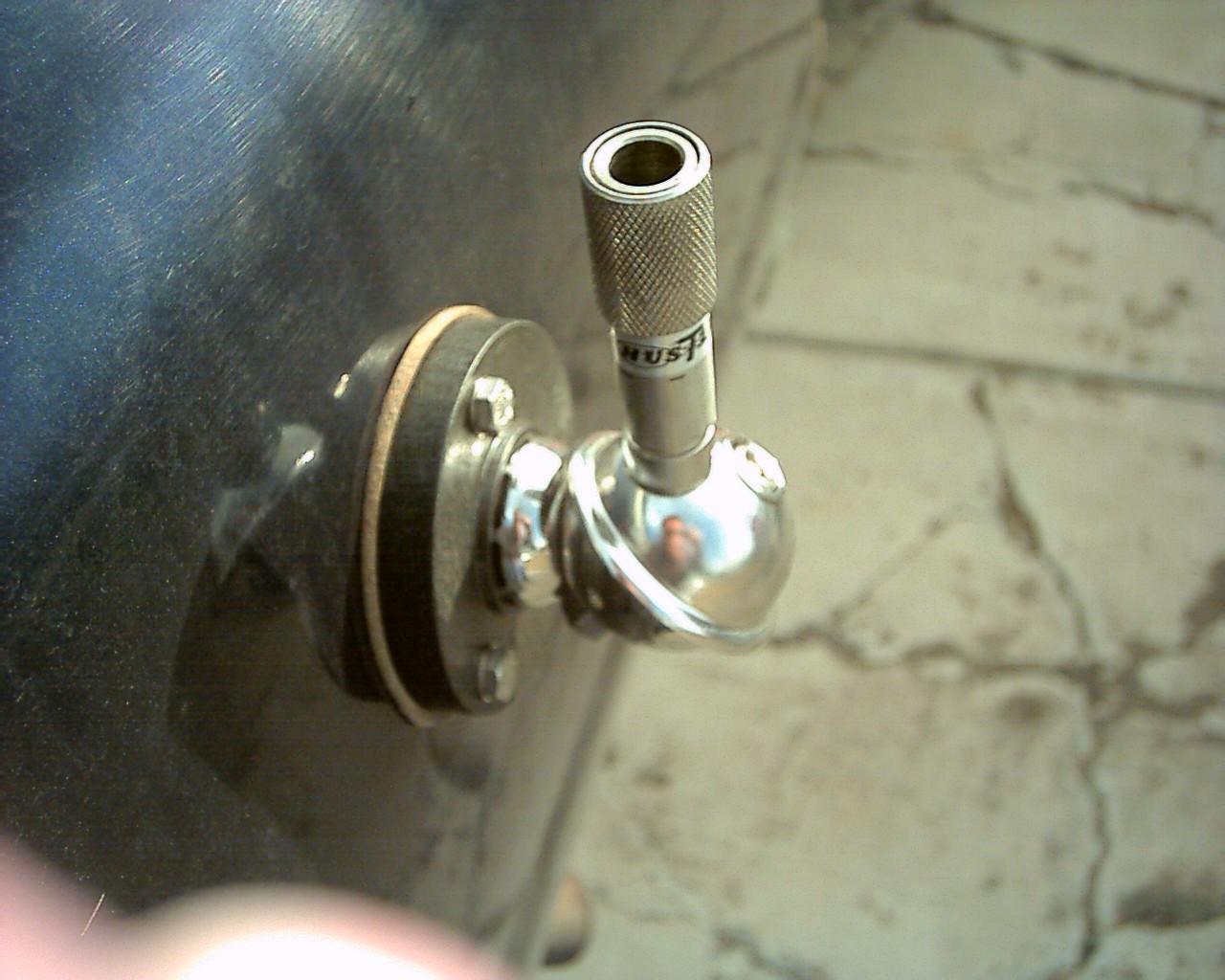
A view of the Hustler heavy duty ball mount, with quick disconnect.
This is the heavy duty model, not some cheapie version.
The idea was to minimize the possibility of arcing while transmitting, since
the voltages off that tuner might be up to a few hundred volts.
I have not had any problems.
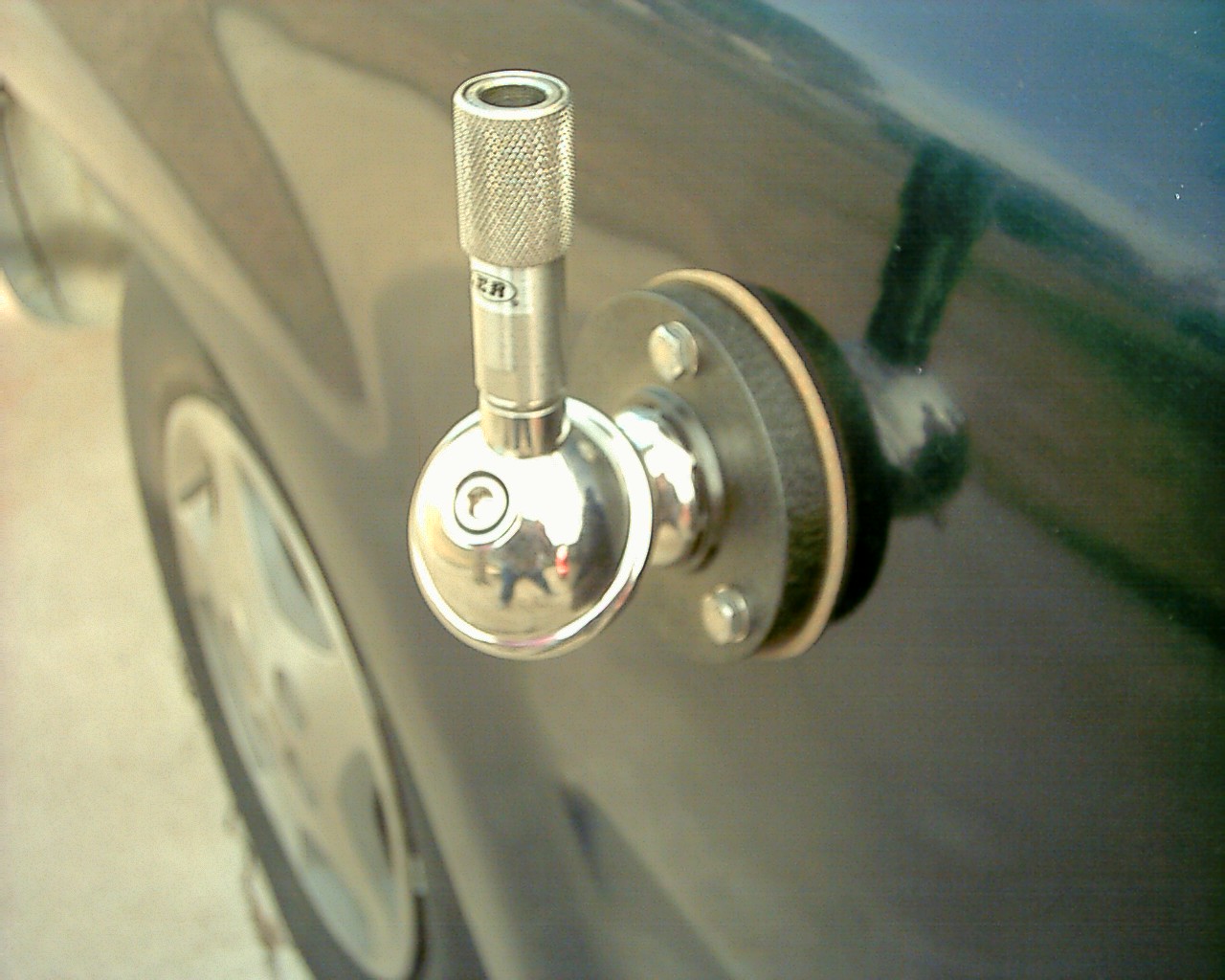
Another view of the Hustler mount.
Right now I can swap in a 102" whip, a shorter fiberglass CB antenna which is better for drive thru restaurants,
and I also have 40m and 75m Lakeview Hamsticks.
The tuner CAN actually tune the two CB antennas onto 75m but they do not work well on that band.
I manually tuned the Hamsticks to my favorite parts of those bands.
If I want to use some other frequency in those bands, I just cut in the tuner. Works great.
I would NOT recommend using a 75m or 40m Hamstick in an attempt to work all bands (75m through 6m) with the tuner. There is a phenomenon called "distributed capacitance" [Article 1] [Article 2] which will degrade performance on the bands the Hamstick was not built for. In addition you run a risk of arcing inside the Hamstick's close windings and could ruin the antenna.
With the 102" whip, I can tune in AM broadcast stations, CB, etc. With any of the other antennas, they tend to be more narrow banded and resonant toward the parts of the bands they were designed for.
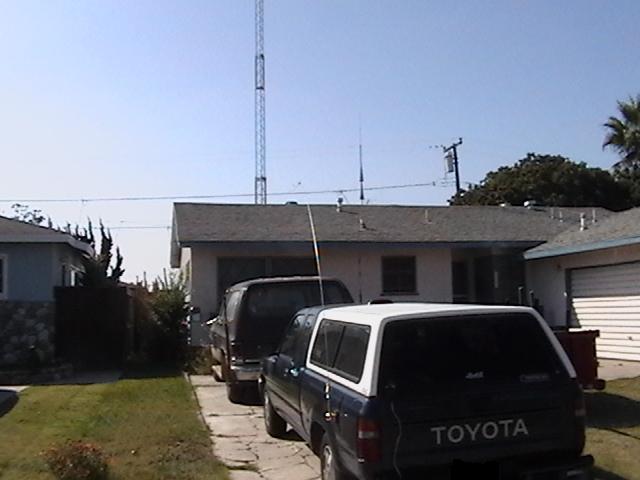
I have used some additional wire, clipped onto the end of the whip
and run to a tree or other support, for getting onto 75m.
In this picture, I used about 60 extra feet of wire supported by the N7JY crank-up tower!
I'd like to say I made a killing on HF with it, but there was too much power line interference and other QRN that night
so that test was inconclusive.
I have read that the AH-4 tuner is capable of tuning up the right length of wire (supposedly some 70 feet of it) onto 160m, although that's not an advertised capability. I haven't been successful yet. We'll see!
The radio is not yet permanently mounted, so my true "in motion" mobileering is yet to happen. But I have the remote mounting kit for the trusty IC-706MkIIg, so that's going to happen later on.
For now though I am looking forward to some real good portable fun on mountaintops and by the ocean shores.
February 2004:
Recently N7JY and I did some field strength tests on my antenna. We wanted to see if there
is any noticeable directivity from it.
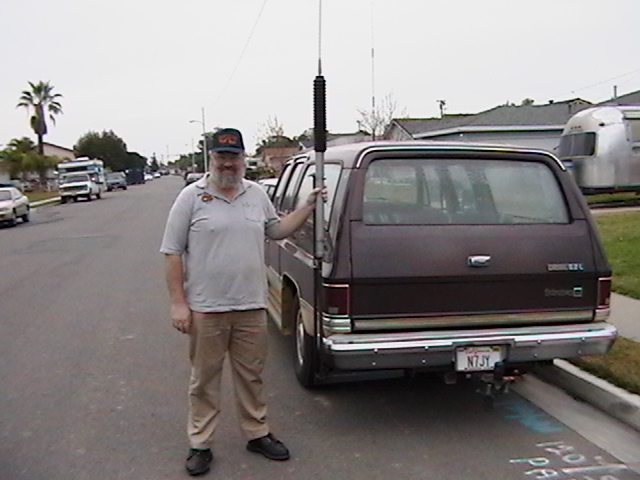 N7JY outfitted the Grizzly Bear with his Don Johnson screwdriver antenna,
and a Tektronics type 323 scope. He tuned the screwdriver to the test frequency and
then connected it straight into the vertical input on the scope using a BNC connector.
It was set for 0.01 V per division, with a 0.1 ms timebase.
N7JY outfitted the Grizzly Bear with his Don Johnson screwdriver antenna,
and a Tektronics type 323 scope. He tuned the screwdriver to the test frequency and
then connected it straight into the vertical input on the scope using a BNC connector.
It was set for 0.01 V per division, with a 0.1 ms timebase.
The Icom 706 was set to its lowest power level (about 5 watts on CW).
We went to a large empty parking lot for a nearby aerospace company. Nobody bothered us there.
I set up at one end of the lot and N7JY was about 120 yards west at the other end of the lot.
There were orange cones around that the
CHP
had apparently been using for a motorcycle training course,
so I appropriated one to use for precisely marking my truck's position as we tested.
Our first tests were on 75 meters. I used the 8 foot stainless steel ship and a 15 foot
wire attachment. The truck was parked facing north (0° true). I then stretched out the wire
and anchored it to the ground with about 6 feet of string, tied to a brick. This bowed the whip
way over, but this is what we were after.
The brick was placed eleven paces from the whip base. This left the end of the wire about one
foot above the ground. The wire coming off the whip had about a 30° slope.
The whip base is mounted in the left rear portion of the truck body.
On a typical reading, it would appear as 1.9 divisions, x .01 volts, which came to .019 V or 19 mV. This is as precise as we could get it under the conditions, and I hope to repeat the tests again with better measurements. We repeated some of the positions just to recheck accuracy.
This is what we got from the first 75m tests with the whip and the wire:
Truck facing 0°, wire and whip going out to X° 350° 19mV 45 (N/A) 90 20 135 19.25 180 19 225 19 270 19.5 315 19.25 |
Notice that the best reading was when the wire went across the shell and out away from the direction of the receiver.
The truck was turned to face east and the test repeated as well as we could.
Truck facing 90°, wire and whip going out to X° 0° (N/A) - this datum was missing. 45 18mV 80 12 135 (N/A) 180 12 225 16.5 270 20 315 19 |
This arrangement was no doubt radiating at high angles, good for NVIS operations.
The next test was using a 75m Lakeview Hamstick antenna. The truck was turned to face different directions with the antenna base in a constant position. Good thing I had that orange cone. (In case you're wondering, I left it there when I was done.)
0° 36mV 45 36 90 36 135 36 180 36 225 36 270 36 315 36 |
We then proceeded to test it on 40 meters. For this test I switched back to just the 8 foot whip in a straight up position, with no wire attachment. (I would like to retest 40m using the wire like we did on 75m. Maybe later.)
0° 20mV 45 21 90 20 135 21 180 22 225 21 270 22 315 20 |
We next tested it on the 20 meter band, with just the 8 foot whip again in vertical orientation.
0° 7mV 45 7 90 7 135 6 180 7 225 7 270 7 315 7 |
Frankly I would have liked to have just cruised around slowly in a tight circle while transmitting so we could get some readings that way. But, that would have introduced too many weird readings, I'm sure.
More useful Yahoo Groups to check out:
Icom 706
Icom Tuners (AH-4 in particular)
Mobile Amateur Radio
Mobile Ham Radio (more focus on RVs)
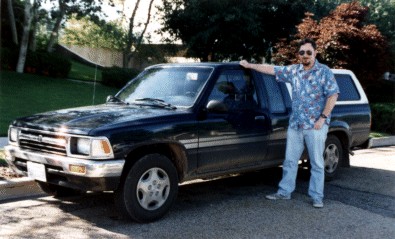 This is the truck with which I plan to have my remote adventures.
It's no offroading truck, but it's served me well for years and I expect to keep
it for several more at least. So in all the discussions here where I talk about using my
truck, that's it right there.
This is the truck with which I plan to have my remote adventures.
It's no offroading truck, but it's served me well for years and I expect to keep
it for several more at least. So in all the discussions here where I talk about using my
truck, that's it right there.

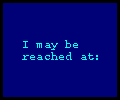
 Disclaimer:
Disclaimer: